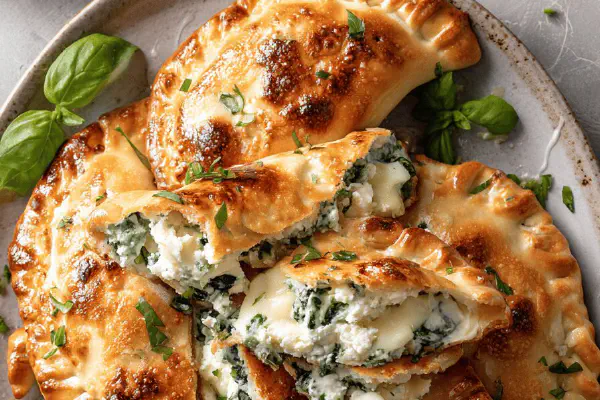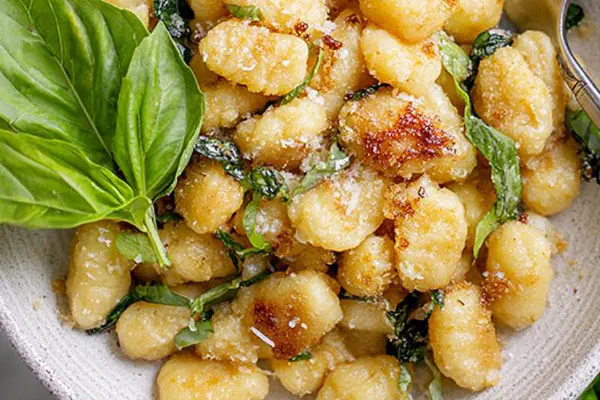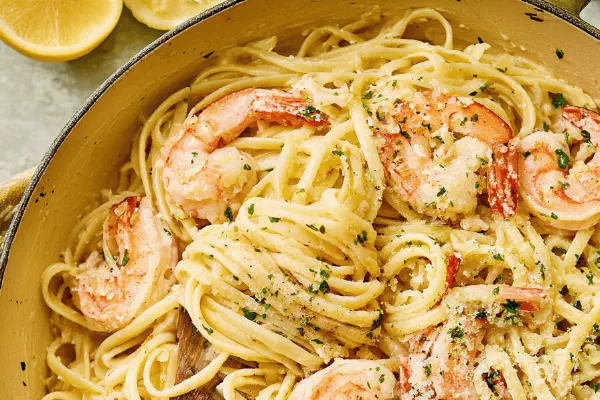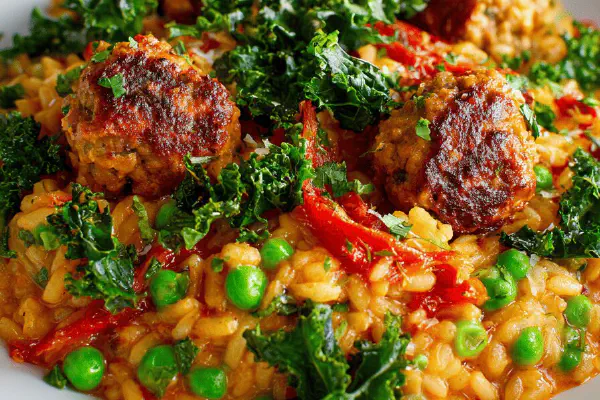Featured Recipe
Caramelized Cauliflower Gnocchi
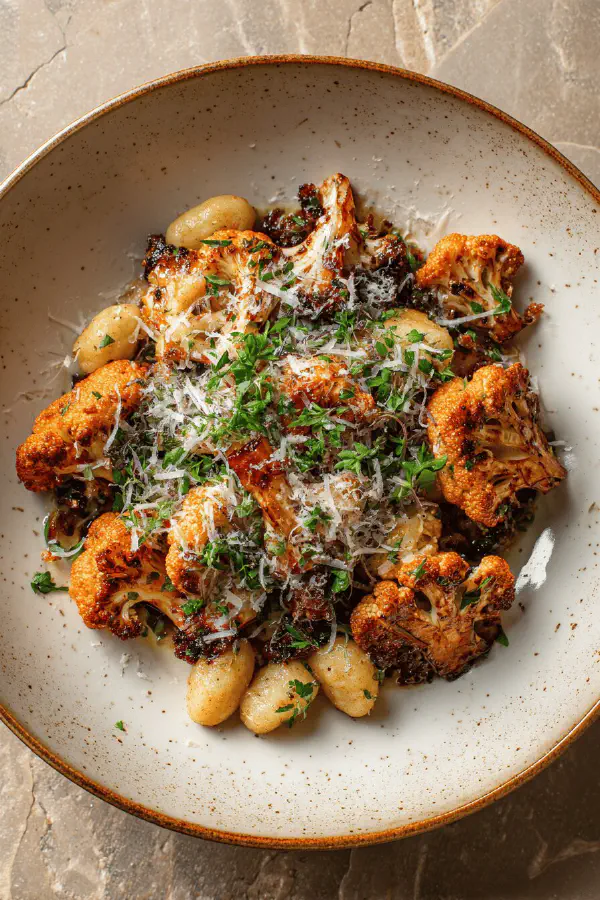
By Kate
"
A twist on gnocchi with caramelized cauliflower sliced thick to crisp edges in browned butter. Garlic hits sharply, vegetable broth reduces until syrupy, coating soft gnocchi tossed last with fresh herbs and sharp pecorino. Swappable ingredients with time-saving tips. A rustic, no-fuss dish that fills the plate and the belly.
"
Prep:
20 min
Cook:
25 min
Total:
45 min
Serves:
6 servings
Italian
gnocchi
vegetarian
dinner
comfort food
Introduction
You want gnocchi but something with bite, a veggie upgrade that plays with textures. Cauliflower sliced thick enough to crisp up, slow caramelization in butter or ghee, releasing nutty notes that push the flavor beyond simple. Garlic swapped for shallot here — mellower, sweet with a subtle punch. Broth reduction adds moisture and umami without drowning flavors. Pecorino swaps parmesan for sharper, saltier finish — use what you got but fine grate, no clumps allowed. Herbs aren’t just garnish but fresh jump of brightness. If you’re running low on time, chickpea gnocchi speeds cooking while adding protein. This isn’t fancy; it’s real cooking, paying attention to browning, timing, recognizing when gnocchi float means done, cauliflower edges turn golden-brown like burnt sugar crust, that’s when aroma tells you its all happening.
Ingredients
About the ingredients
Gnocchi can vary wildly — rice-based tends to fall apart; potato type holds better. When choosing cauliflower, look for firm heads with tight florets, avoid ones starting to brown or limp; that bitterness seeps into dish. Butter can be switched for ghee or olive oil depending on diet, both will brown differently but give you caramelization; ghee adds nuttier flavor without water content that makes steam. Shallot instead of garlic for mellow aroma but garlic still works, just add a little earlier to avoid raw punch. Parsley or tarragon swap out chives: parsley is fresh and grassy, tarragon adds anise notes. Broth needs to be flavorful; skip watery broth or just use a good-quality stock cube dissolved. Name your cheese carefully; pecorino romano is hard, salty, adding balance; for vegan, nutritional yeast flakes are an option but add at end.
Method
Technique Tips
Float-test the gnocchi frequently, overcooking turns them mushy — timing matters but float is your best indicator. In pan, heat background first; don’t overcrowd cauliflower or it will steam not caramelize—patience pays off letting one side get deeply colored before flipping. Don’t stir too often or it won’t brown properly, but be ready to catch the moment color goes from golden to burnt. When adding aromas (shallot or garlic), avoid high heat which burns them bitter; medium low is best. Broth reduction: keep simmering, watch liquid level drop; it should change texture, syrupy, sticky enough to adhere. Folding gnocchi last prevents smashing, toss gently, use spatula or tongs for delicate handling. Finishing cheese added off heat keeps it melting smooth but avoids drying out gnocchi. Adjust seasoning again at end; salt levels fluctuate with broth and cheese. Add extras like lemon or chili flakes for brightness or heat. Batch cooking tip: keep gnocchi warm without sticking by oil on plate covered loosely with foil.
Chef's Notes
- 💡 Watch gnarled edges of cauliflower. Perfect golden crust should sing, pop. Don’t rush the flip. Takes time; flip only when ready. Undercooked won’t give crunch.
- 💡 Substitutes work wonders. For ghee, use butter or olive oil, adjust for flavors. Chickpea gnocchi adds protein but cooks faster, adjust timing. Keep separate.
- 💡 Water is your enemy during caramelizing. Salt your boiling water before gnocchi goes in. It’s key. Float test gnocchi often, mushy isn’t edible. Sling them out right when they rise.
- 💡 Fresh herbs don’t just sit prettily. They jump from the plate. Parsley or tarragon brightens the dish. Adjust based on what you have; don’t fear swaps.
- 💡 Too much broth? Never fear. Let it reduce further. Thick syrupy texture is a goal. Stickiness lets flavors cling to ingredients. Nice finish. Enhance with citrus or heat.
Kitchen Wisdom
How to avoid mushy gnocchi?
Float-test them constantly. If they stay down, they need longer. Don’t overcook. Timing is crucial.
What if cauliflower browns too fast?
Lower heat, patience needed. High can burn edges. Should sizzle gently. Brown takes time. Flip later.
Recommendations for storage?
Store in airtight container. Gnocchi freeze well. Cauliflower texture may shift; best fresh. Reheat carefully.
Options for cheese substitutes?
Pecorino not on hand? Parmesan works too. For vegan, try nutritional yeast. Add it last to avoid clumping.
